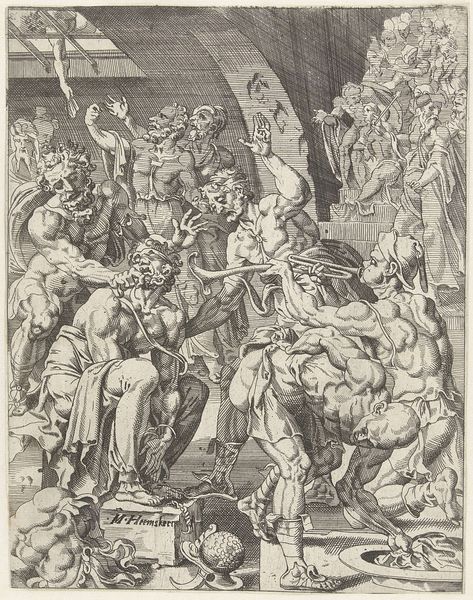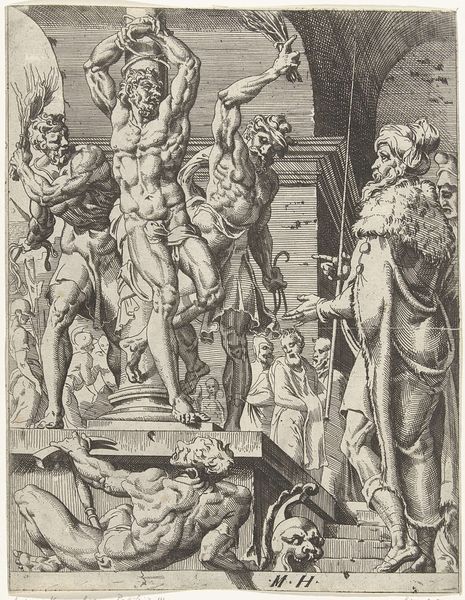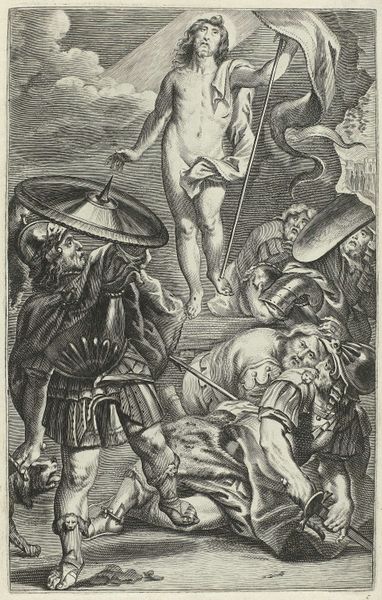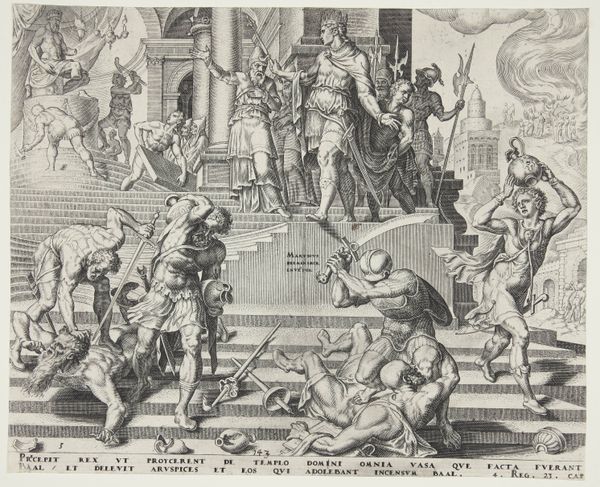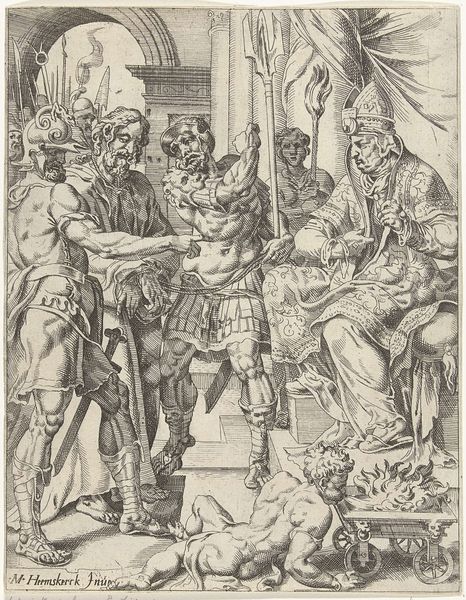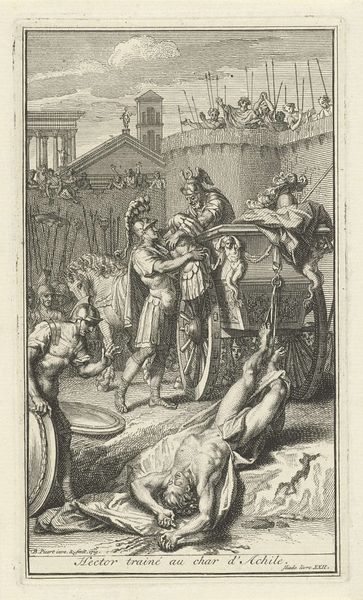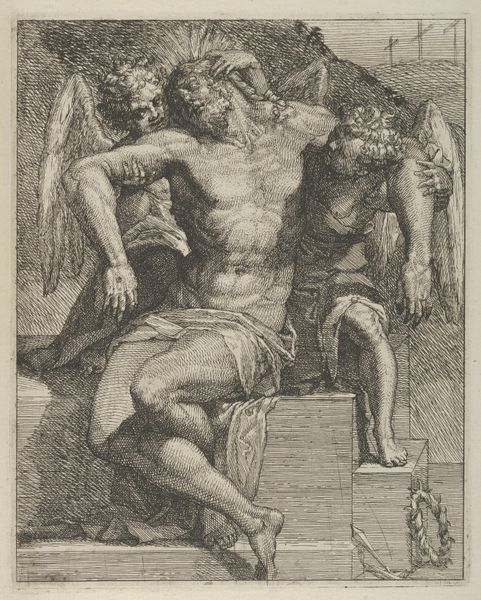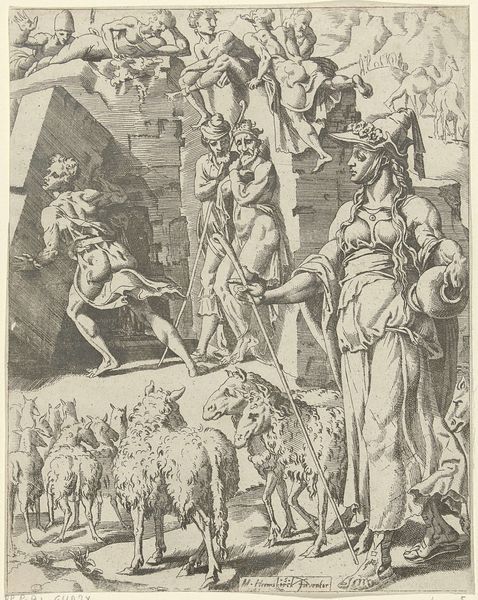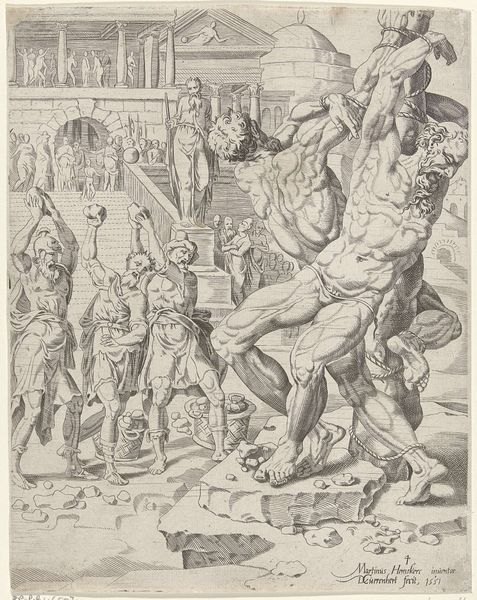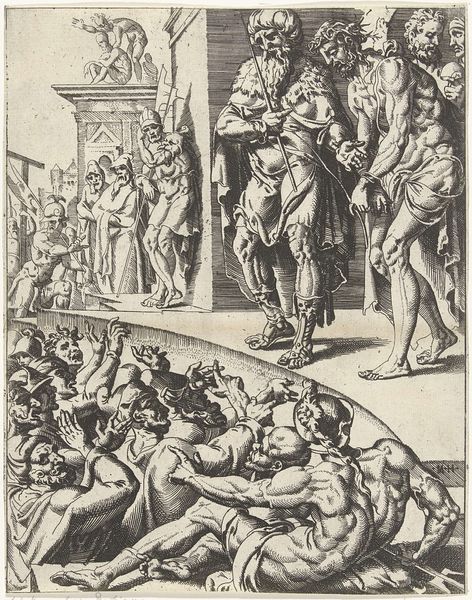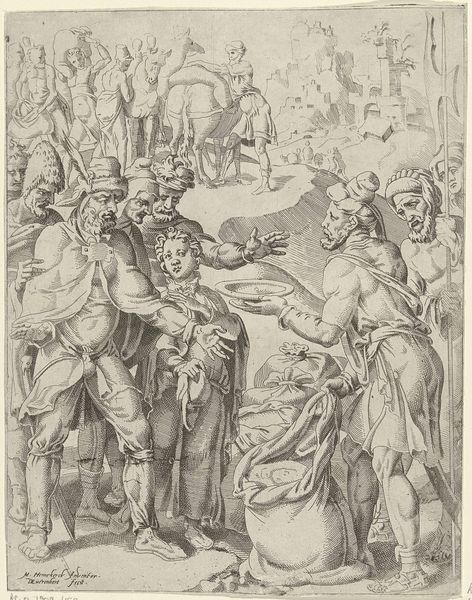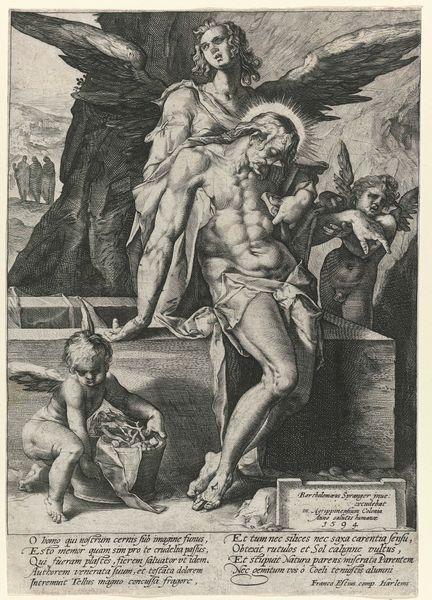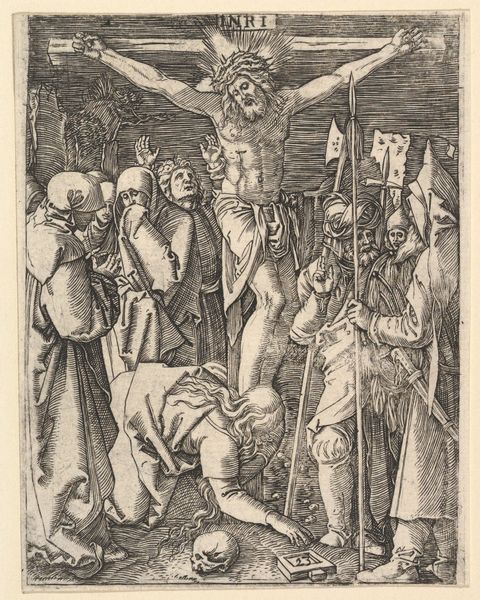
drawing, print, engraving
#
drawing
# print
#
figuration
#
history-painting
#
northern-renaissance
#
engraving
Dimensions: height 248 mm, width 194 mm
Copyright: Rijks Museum: Open Domain
Curator: This engraving, "The Burial of the Rich Man," created in 1551, presents us with a rather bleak moral lesson rendered by Dirck Volckertsz Coornhert. The print is held here at the Rijksmuseum. Editor: It's arresting, isn’t it? The mood is just steeped in dread, yet it’s visually captivating. The textures seem rough, the contrast dramatic—like something dredged from a nightmare. Curator: I think you nailed it. The northern Renaissance loved a good memento mori, and here Coornhert vividly depicts the fate of earthly riches after death. See the muscular fellow digging, presumably the grave? He's working away, while monks seem to intone on another ledge and a corpse reclines within the jaws of death. Editor: The print medium itself is fascinating here. It was such a crucial method for disseminating ideas. And engraving, with its precision and labor-intensive process, feels symbolically charged in an image about material wealth versus spiritual poverty, don't you think? All that detailed work... it's a commodity itself, mirroring the riches depicted, only to then deliver the image to the masses in an act of ironic critique. Curator: Absolutely. And notice how the monks are all faceless figures—it’s almost as if the message here isn't to just avoid being a rich man in death, but perhaps critique some forms of contemporary ritual. I like how it makes me wonder. Editor: Yes! And how accessible this image would have been, compared to an oil painting, say. It really broadens the reach of that critique, the work acting as a multiplier. Think of how many of these prints might have been circulated, carrying the image across Europe. Each line is laden with its historical moment, but also with how the artwork operated in it. Curator: Right—prints democratized art! So many were cheaply done. Coornhert uses printmaking's inherent reproducible qualities here to create social commentary that remains quite poignant centuries later. What do you take away, ultimately, from this grim scene? Editor: It's a stark reminder of the temporal nature of wealth and the deceptive nature of material possessions. The toil and the supposed virtue in its imagery only underscores the material labor of representation itself—even art doesn’t escape this irony. What about you? Curator: Well, I find myself reflecting on vanity, the choices we make, and what truly matters beyond our time on earth. Heavy stuff, but Coornhert leaves you chewing on it all the way home.
Comments
No comments
Be the first to comment and join the conversation on the ultimate creative platform.
